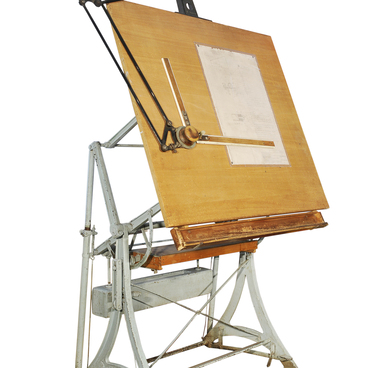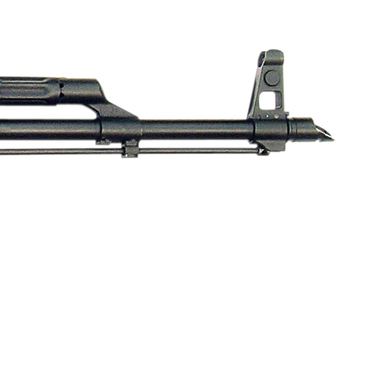When a rifle is fired, red-hot powder gases are formed in its barrel that must be expelled in order not to damage the weapon. However, this “extra” energy can also be harnessed to automatically reload the assault rifle.
After the first shot is made, gases escape through the gas escape hole in the barrel bore and push the piston, which, in its turn, abruptly pulls the bolt back to its end position. A new cartridge is sent from the magazine to the chamber, and the spring pushes the bolt back to its place. After the second shot, the cycle is repeated. The automatics of most assault rifles is based on this principle.
When firing from the assault rifle, a soldier experiences a sequential series of multidirectional impulses, such as the recoil of the shot, the reaction of the gas chamber, the impact of moving parts in the extreme back and front positions. Such impulses lead to the dispersion of bullets when firing in bursts, which significantly reduces the accuracy and the grouping of shots.
In the 1960s, experts of the Klimovsk Central Research Institute for Precision Machine Engineering worked on new firearm systems to increase the accuracy of automatic firing. The institute’s design bureau developed the so-called balanced automatics recoil system which was embodied in the prototypes by design engineer Pyotr Tkachev. The automatics system design proposed by Tkachev was fundamentally different from all traditional systems and turned out to be the most efficient option.
The new design was based on the principle of counter motion of two different kinematically interconnected masses. After the shot, they would begin to move in opposite directions. In end positions, they balanced each other out, as well as the entire system. The new principle was recommended for testing to all design bureaus that manufactured automatic firearms, including Kalashnikov’s design bureau at the Izhevsk Machine-Building Plant (Izhmash).
In 1964, Kalashnikov’s design bureau presented a model of an assault rifle with a balanced automatics recoil system. It was developed on the basis of the AKM, a modified model of the Kalashnikov assault rifle. The new design allowed to improve the grouping of shots and increase the rate of fire to 800 shots per minute. However, due to the large weight and low performance, the development of the prototypes was stopped. One of such prototypes is presented in the museum’s collection.
After the first shot is made, gases escape through the gas escape hole in the barrel bore and push the piston, which, in its turn, abruptly pulls the bolt back to its end position. A new cartridge is sent from the magazine to the chamber, and the spring pushes the bolt back to its place. After the second shot, the cycle is repeated. The automatics of most assault rifles is based on this principle.
When firing from the assault rifle, a soldier experiences a sequential series of multidirectional impulses, such as the recoil of the shot, the reaction of the gas chamber, the impact of moving parts in the extreme back and front positions. Such impulses lead to the dispersion of bullets when firing in bursts, which significantly reduces the accuracy and the grouping of shots.
In the 1960s, experts of the Klimovsk Central Research Institute for Precision Machine Engineering worked on new firearm systems to increase the accuracy of automatic firing. The institute’s design bureau developed the so-called balanced automatics recoil system which was embodied in the prototypes by design engineer Pyotr Tkachev. The automatics system design proposed by Tkachev was fundamentally different from all traditional systems and turned out to be the most efficient option.
The new design was based on the principle of counter motion of two different kinematically interconnected masses. After the shot, they would begin to move in opposite directions. In end positions, they balanced each other out, as well as the entire system. The new principle was recommended for testing to all design bureaus that manufactured automatic firearms, including Kalashnikov’s design bureau at the Izhevsk Machine-Building Plant (Izhmash).
In 1964, Kalashnikov’s design bureau presented a model of an assault rifle with a balanced automatics recoil system. It was developed on the basis of the AKM, a modified model of the Kalashnikov assault rifle. The new design allowed to improve the grouping of shots and increase the rate of fire to 800 shots per minute. However, due to the large weight and low performance, the development of the prototypes was stopped. One of such prototypes is presented in the museum’s collection.

